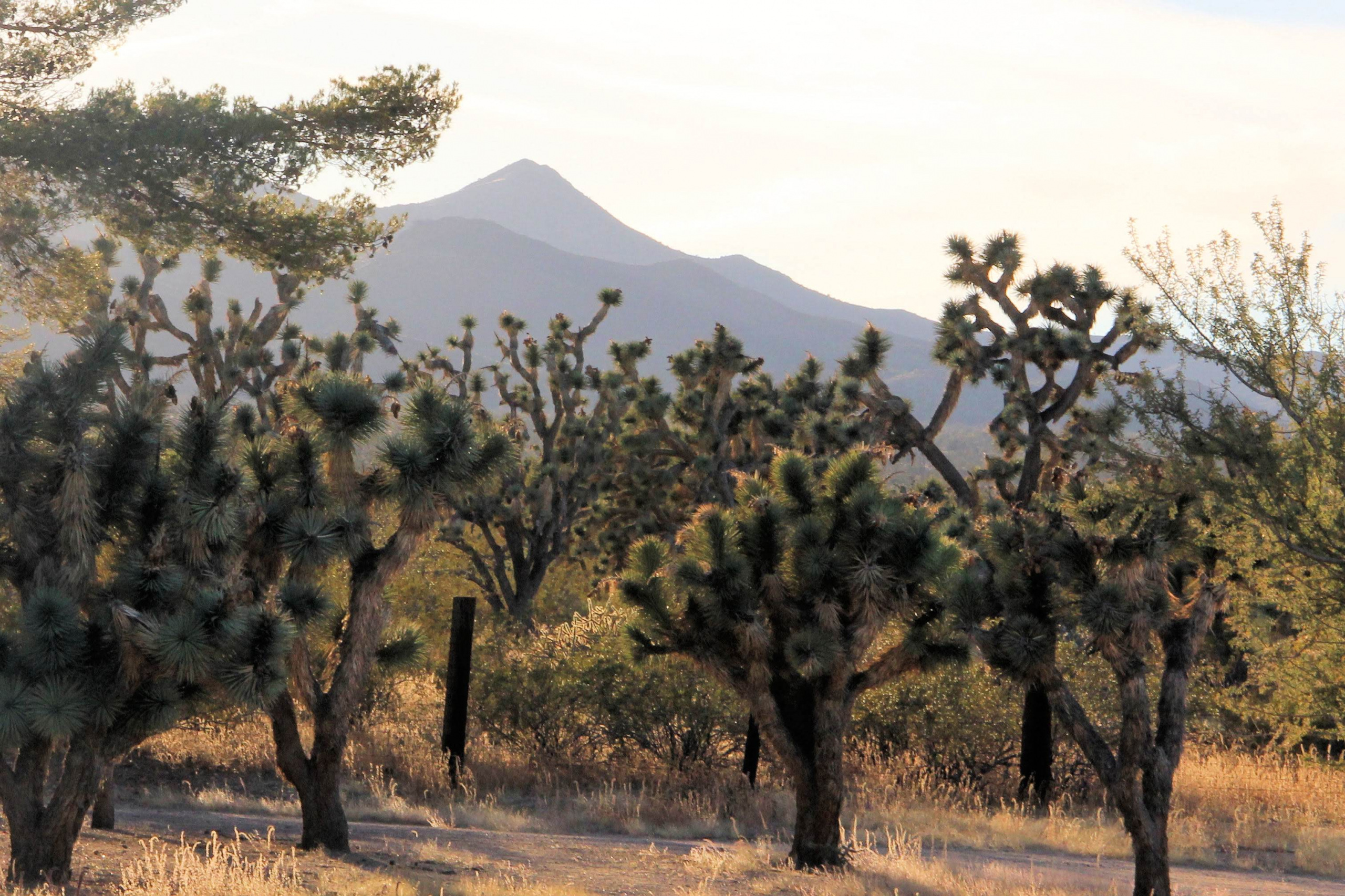
Protect Avi Kwa Ame
Spirit Mountain and its surrounding area in Nevada should be designated as a national monument

Cover photo: Castle Mountains – Nevada Side, Photographer: Alan O’Neill
Update: On March 21, 2023, President Biden designated Avi Kwa Ame as a national monument, protecting approximately 506,814 acres.
The proposed Avi Kwa Ame (Ah-VEE kwa-meh) National Monument would cover more than 450,000 acres of land in southern Nevada. Standing 5,600 feet above sea level, Avi Kwa Ame is the Mojave name for Spirit Mountain and its surrounding area, located about 80 miles south of Las Vegas.
There is no shortage of beautiful scenery at Avi Kwa Ame. If you were to hike through the area, you would see canyons, natural springs, peaks, grasslands and even petroglyphs. In fact, Avi Kwa Ame is one of the most ecologically diverse parts of the Mojave Desert and is home to species that are only found in the southwestern United States, like the Joshua trees or the Gila monster. Avi Kwa Ame is actually home to the world’s largest Joshua tree forest: A few of the forest’s Joshua trees are more than 900 years old. There are also 28 species of native grasses, many of which are rare.

Photo credit: Alan O’Neill
The area provides habitat for Mojave Desert tortoise and desert bighorn sheep. Birds also frequent Avi Kwa Ame, including migratory species and the largest known population of golden eagles in Nevada. The area has been designated as an “Important Bird Area” by The National Audubon Society due to its diverse bird species, such as the gilded flickers, Harris’ hawks, peregrine falcons and bald eagles. Birds flock there because of its proximity to the Colorado River, one of the most important stops on the Pacific Flyway, which is a major bird migration route.

Photo credit: Pacific Southwest Region USFWS from Sacramento, US, Public domain, via Wikimedia Commons
In early 2022, Nevada Rep. Dina Titus introduced the Avi Kwa Ame National Establishment Act (H.R. 6751), pushing for a national monument designation that will protect over 450,000 acres of land.
This proposed national monument would create a wildlife corridor connecting the Mojave National Preserve, the Castle Mountains National Monument, the Mojave Trails National Monument, the Dead Mountain Wilderness Area in California and the Lake Mead National Recreation Area. The corridor would allow for the continued growth and survival for the Mojave Desert flora and fauna; the pathway would help the desert bighorn sheep and many other wildlife migrate between the different mountains.
Twelve different Indigenous groups consider the area sacred, including the Mojave, Hopi, Chemehuevi Paiute, Havasupai, Hualapai, Kumeyaay, Maricopa, Pai Pai, Quechan, Yavapai, Halchidhoma and the Cocopah. In their cultures, these groups consider Avi Kwa Ame to be the very source of life. According to the former chairperson of the Fort Mojave Indian Tribe, Nora McDowell, “this area holds the footprint of our ancestors, and past, present, and future generations.”
As Rep. Titus said, “Spirit Mountain and the surrounding Mojave Desert region that make up Avi Kwa Ame contain biologically diverse and culturally significant lands which are a source of pride for Southern Nevadans.”
This area has been vulnerable to large-scale development projects. The Mojave Desert’s geography and climate provides an opportunity for solar energy panels. While the transition to cleaner energy sources is necessary, it should not be at the expense of wildlife and protecting Indigenous history.
By making Avi Kwa Ame a national monument, we can protect the area for future generations. There is plenty of local support: According to a poll from January 2022, 70% of Nevadans support making Avi Kwa Ame a national monument. There are many local organizations, such as Conservation Lands Foundation, National Parks Conservation Association, Native Voters Alliance Nevada and Nevada Conservation League, working on the ground to make this happen. President Joe Biden should designate Avi Kwa Ame as a national monument, so that we can protect the area for the beautiful hikes, Indigenous groups, and flora and fauna.
This blog was co-authored by Environment America intern, Jeanie Kim
Topics
Authors
Ellen Montgomery
Director, Public Lands Campaign, Environment America Research & Policy Center
Ellen runs campaigns to protect America's beautiful places, from local beachfronts to remote mountain peaks. Prior to her current role, Ellen worked as the organizing director for Environment America’s Climate Defenders campaign. Ellen lives in Denver, where she likes to hike in Colorado's mountains.
Find Out More

Bank of America said it would stop financing drilling in the Arctic Refuge. Now it’s backtracking.

Storytellers take a stand to protect wildlife

Recovering America’s Wildlife Act: a needed tool to protect wildlife

